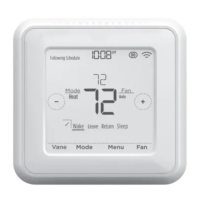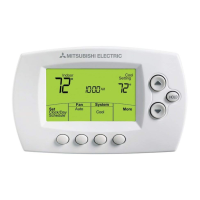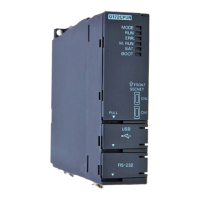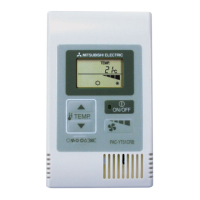70
6 INSTALLATION AND WIRING
6.1 Before Using the I/O Modules
Influence on the relay life by a connected load
An actual relay life can be substantially shorter than the relay life curve depending on the type of a connected load and the
characteristics of its inrush current. ( Page 69 Relay life (contact switching life))
The inrush current generated by a connected load can lead to contact welding of the module. To prevent shortening of the
relay life and contact welding, take the following measures:
• Considering the possibility of a high inrush current, select a load so that the inrush current generated by the connected load
falls within the range of the rated current of the module.
• Connect a relay capable of withstanding the inrush current, outside the module.
The following table lists the relations between typical loads and each inrush current.
Select a load so that the inrush current, i, and rated current, io, fall within the range of the rated switching current described in
the module specifications. In some loads, the inrush current flows for a long time.
Load type Waveform Inrush current i/
rated current io
Waveform Inrush current i/
rated current io
Inductive
load
Load of a solenoid
i: Inrush current
io: Rated current
t: 0.07 to 0.1 seconds
Approx. 10 to 20
times
Load of an electromagnetic contactor
i: Inrush current
io: Rated current
t: 0.017 to 0.033 seconds (1 to 2 cycle)
Approx. 3 to 10
times
Lamp load Load of an incandescent lamp
i: Inrush current
io: Rated current
t: Approx. 0.33 seconds
Approx. 3 to 10
times
Load of a mercury lamp
i: Inrush current
io: Rated current
t: 180 to 300 seconds (3 to 5 minutes)
Approx. 3 times
*1
Load of a fluorescent lamp
i: Inrush current
io: Rated current
t: within 10 seconds
Approx. 5 to 10
times
Capacitive
load
Capacitive load
*2
i: Inrush current
io: Rated current
t: 0.008 to 0.33 seconds (0.5 to 2 cycle)
Approx. 20 to 40
times
i
io
t
io
t
i
io
t
i

